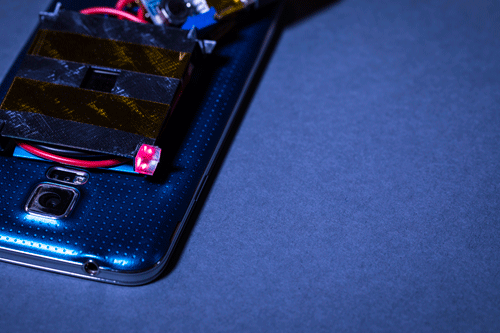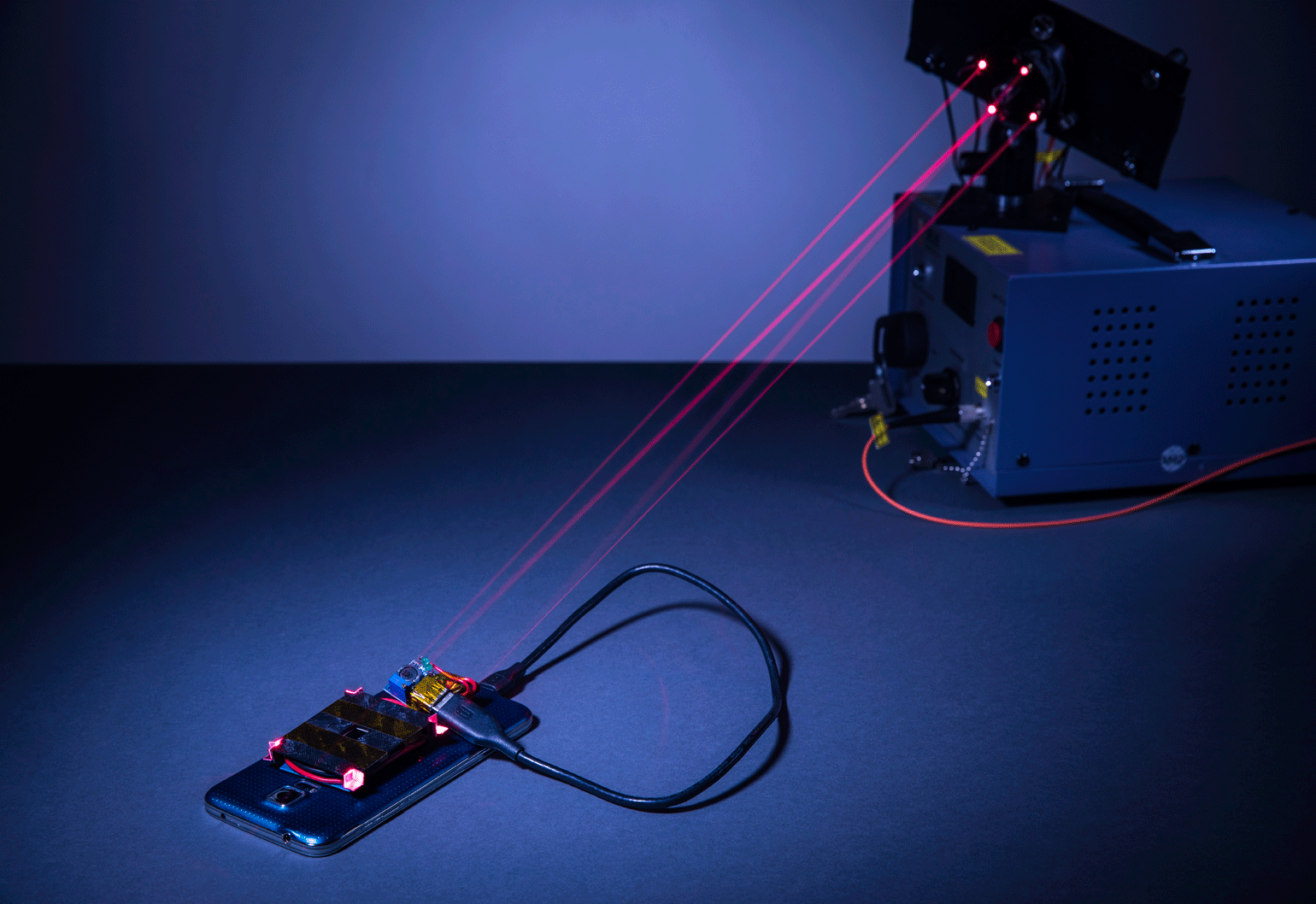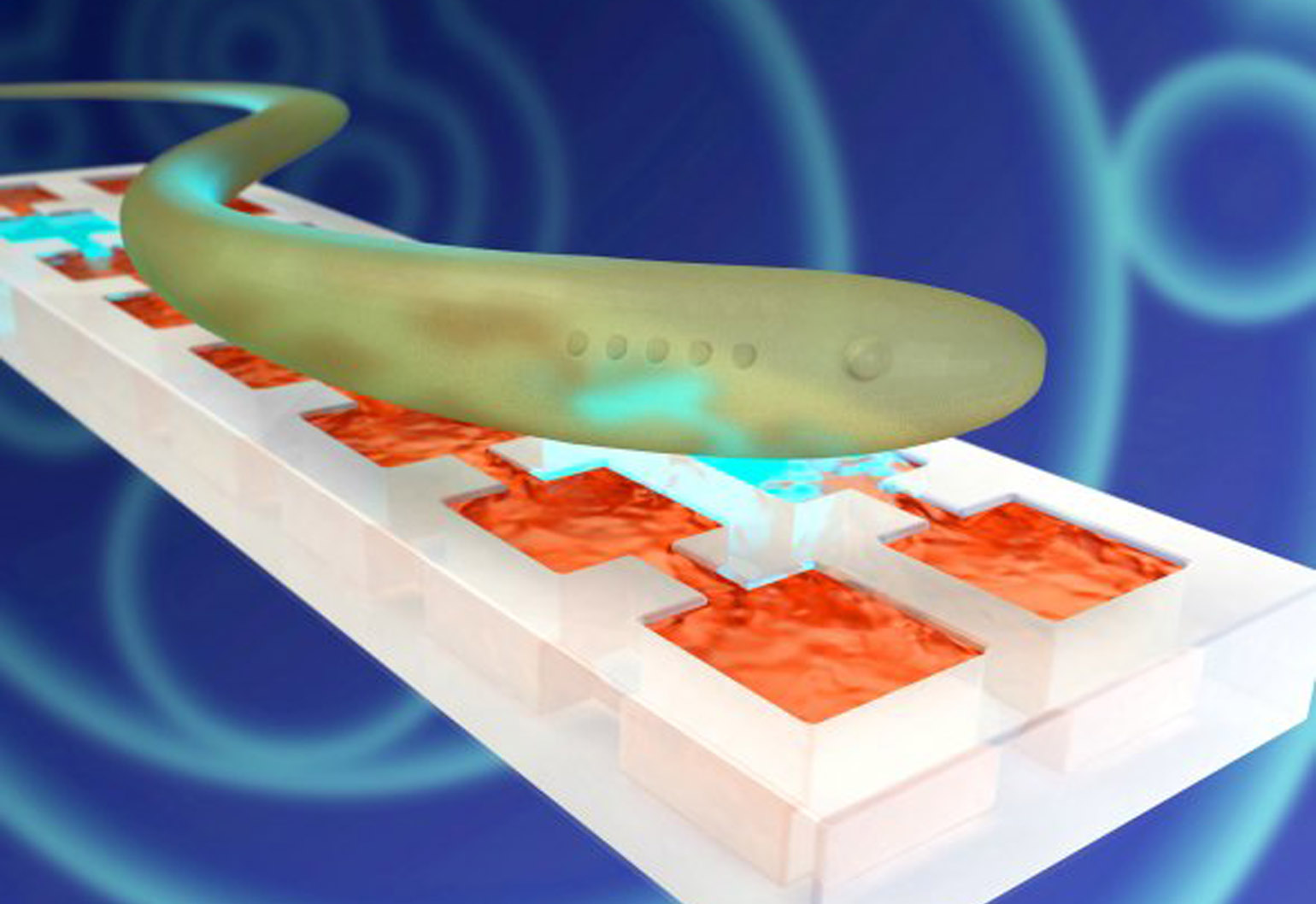Electrical engineers from the University of Washington have prototyped laser technology that could put an end to the hassle of plug-in chargers, and have a greater range than near-field wireless alternatives.
“You could build a phone case that had the [laser] receiver integrated into it, and then buy the laser setup,” Vikram Iyer, co-lead author of the research, told Wired.
The team said that their technology can charge a phone at the same speed as a USB charger. It has a range of around 4.3 m for a 15 square inch (96.7 cm square) area. It could also be modified to charge devices placed on a surface, such as a desk or table, from a 12 m distance.
To allow the charging beam to be accurately targeted, the smartphone signals its location to the laser emitter with ‘chirps’ too high to be heard by humans.
While this sounds great, there are safety issues: a laser powerful enough to deliver 1 W of power to charge a smartphone through a fingernail-sized receiver will zap a human eye in under 10 microseconds. The laser is also invisible, so you wouldn’t know what hit you until the lights went out for good.
The team solved this issue with custom 3D retroreflectors (which work in a similar way to reflectors on bicycle wheels and road signs) to create a ‘forcefield’ of four harmless light beams around the laser beam. This forcefield acts as a safety switch. If anything breaks any of the light beams, the laser’s power is automatically cut off.
The width of the retroreflected safety beams is set to around 10.1 cm to allow time for the signal (which travels at the speed of light) to turn off the laser before people’s arms, or eyeballs, can reach the laser.

In addition to this safety mechanism, the researchers have designed a metal flat-plate heatsink to dissipate the heat generated by the charging laser.
The heatsink helps to charge the phone, using a very thin thermoelectric generator fitted with a photovoltaic cell above the aluminium heatsink strips. The whole heatsink setup is around 8 mm thick and 40 mm wide.
“These features give our wireless charging system the robust safety standards needed to apply it to a variety of commercial and home settings,” said research co-author Arka Majumdar.
According to Iyer, the team focussed a phone charging because of the lack of effective wireless solutions to this very common need.
The team also see their research being applied to charging other devices, such as computers, tablets and cameras.
Sadly, the work is yet to be commercialised, so we’ll have to wait a while before laser chargers are available to replace the multitude of cords in our offices and homes.
“Depending on what commercial interest is, we’ll patent it and explore options for developing it or licensing,” Iyer said.
[Main image: The wireless charging system created by University of Washington engineers. The charging laser and guard lasers are normally invisible to the human eye, but red beams have been inserted in place of the guard beams for demonstration purposes. Credit: Mark Stone/University of Washington.]



